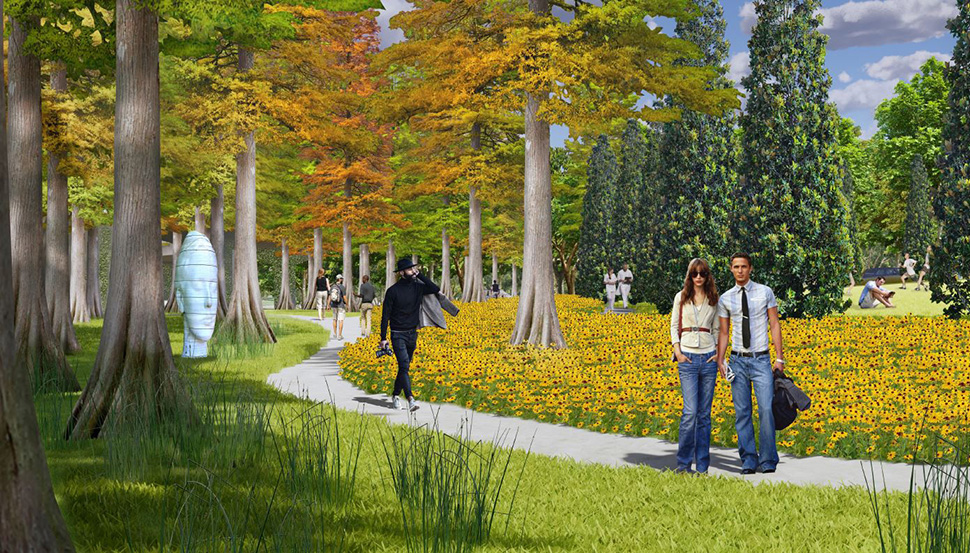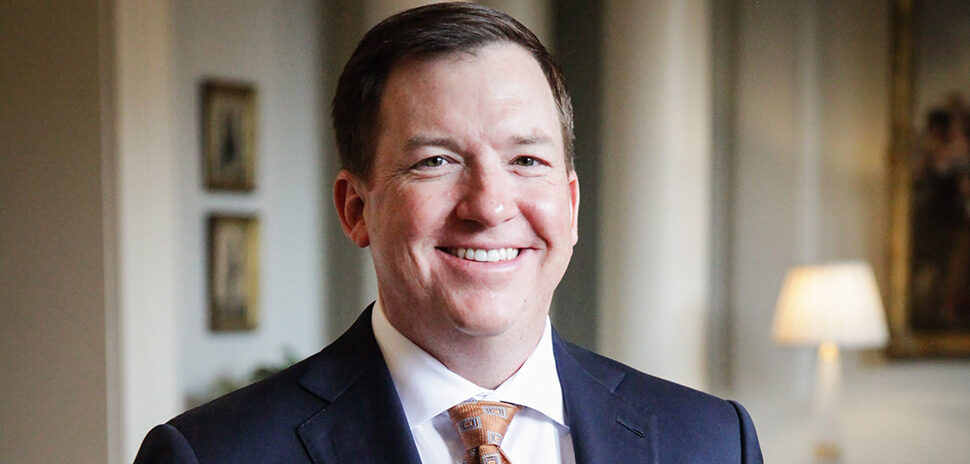The streetscape on a 2-mile stretch along the Southwestern Medical District in Dallas—the city’s biggest urban heat island—is about to undergo a transformative change that will turn it into a dedicated green space to make a visit to a clinic or hospital a little more pleasant.
Texas Trees Foundation said it has been hard at work on the project that will create a connection point for health—through nature.
“Texas Trees Foundation is honored to continue greening the Dallas community by creating a desired streetscape and park that will calm traffic while maintaining emergency access, increase tree canopy, offset the urban heat island in the SWMD, offer aesthetic enhancements, and provide a safer streetscape environment,” Lannie McClelen, program manager at the foundation, said in a statement. “Our goal is to improve the area for its millions of visitors—people who walk, bike, take transit, and drive—by means of well-connected paths to adjoining hospitals, neighborhoods, and key destinations.”
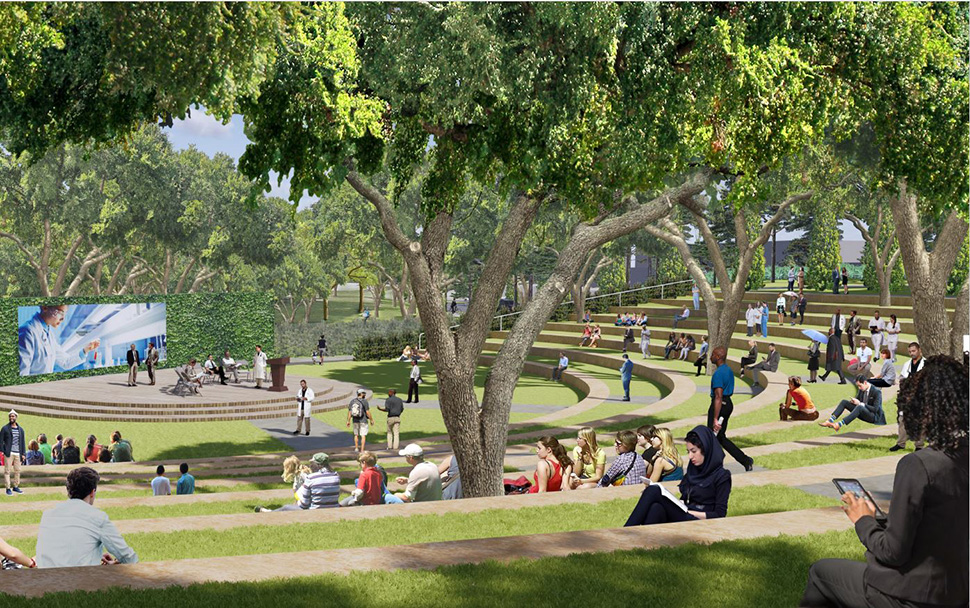
Rendering of the Southwestern Medical District green space project. [Image: Texas Trees Foundation]
The foundation said that the holistic restructuring of the Harry Hines corridor is a result of it being in the largest urban heat island within the city of Dallas.
According to the foundation, the implementation of the SWMD Streetscape and Park project is centered on evidence-based design—the process of constructing a building or physical environment based on scientific research to achieve the best possible built outcomes.
The foundation said that the visionary, therapeutic landscape redesign is set to transform that primary corridor into a vibrant, connected, and safe multi-model linear parkway, complete with a 10-acre park.
Replacing concrete cloverleaf with real leaves
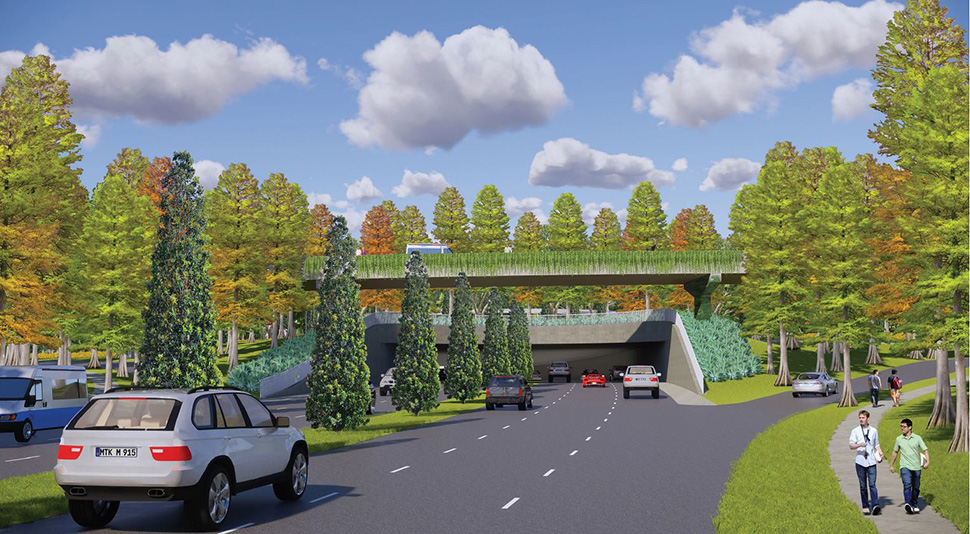
Rendering of the Southwestern Medical District green space project. [Image: Texas Trees Foundation]
“We’re excited about the new streetscape amenities and park expected along the Harry Hines corridor,” David Biegler, chairman of the SWMD board, said in a statement. “The medical complex’s three major hospitals have a long history of commitment to health and healing. Having a surrounding green space that is expected to improve physical, social, and mental health for patients, visitors, and staff in the District is a welcome addition.”
The foundation said that the areas of improvement include the antiquated Harry Hines corridor from roughly Treadway Street to Lucas Drive, with the park replacing the 1940s cloverleaf at Inwood Road.
Construction is set to begin as early as fall 2025 for Phase 1 of the project.
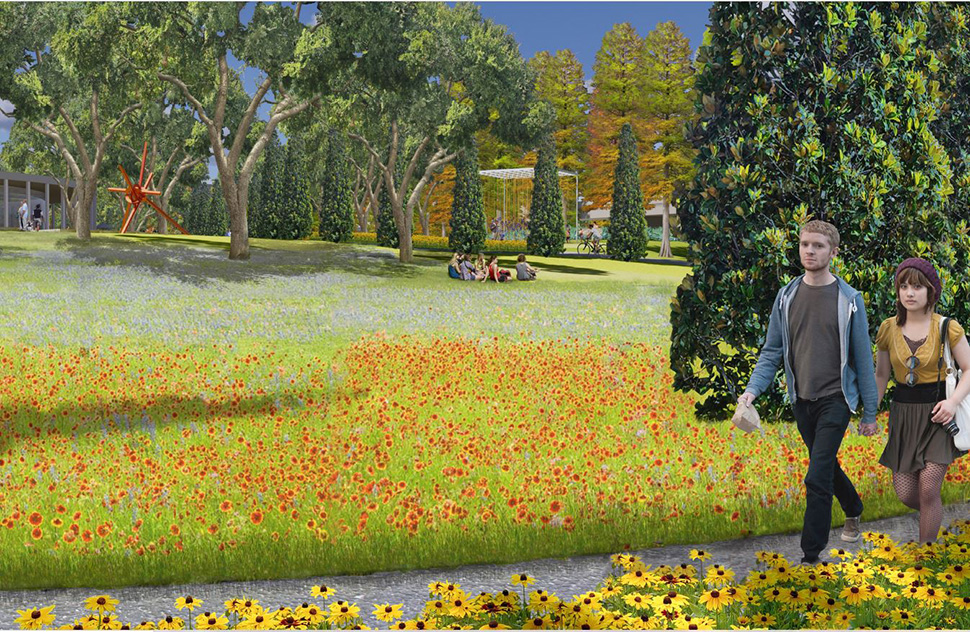
Rendering of the Southwestern Medical District green space project. [Image: Texas Trees Foundation]
The foundation noted that the Southwestern Medical District is an economic hub for the city of Dallas, delivering world-renowned healthcare in partnership with innovative world-class research and education.
Various businesses, nonprofits, and residential mixed-use projects surround the three major hospital systems, Parkland Health and Hospital System, Children’s Health Dallas, and the UT Southwestern Medical Center.
More than 3 million people experience the district annually, including an employee workforce of roughly 37,000 in the medical complex, the foundation said.

[Image: Texas Trees Foundation & Hyphae Design Labs]
Cutting-edge environmental science and more than 50 collaborators
The foundation said that last spring, microclimatic sensors were installed along the Harry Hines corridor. Every 20 minutes they send climatic data (temperature, humidity, wind, light, etc.) to a communication hub installed on the roof of Parkland hospital.
The data is used to create simulations and models for the design team so they can redesign the Harry Hines corridor for optimal human health and thermal comfort, the foundation said.
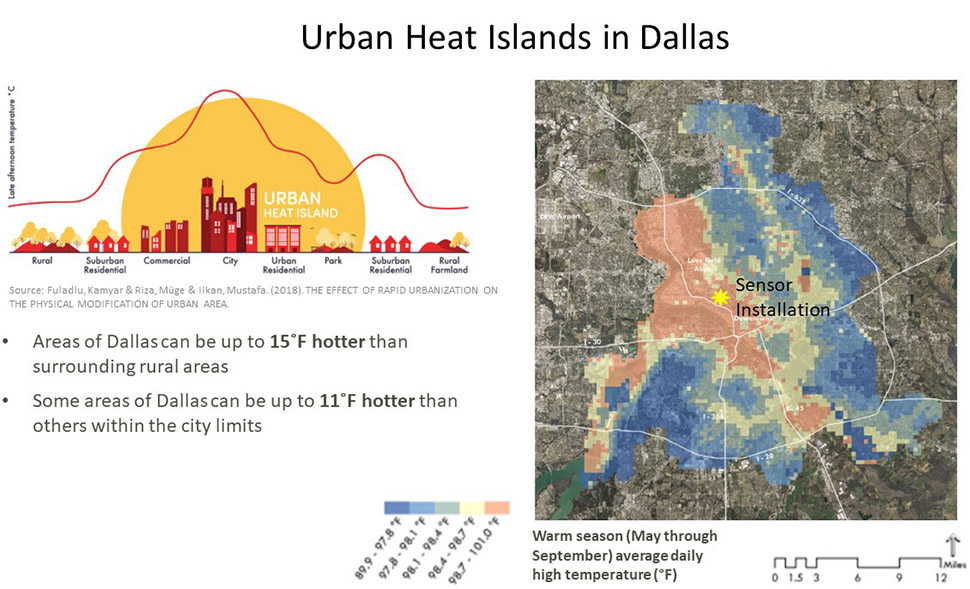
Image: Texas Trees Foundation
The cutting-edge environmental science, using real data in real time, is enabling the SWMD Corridor and Park Project to demonstrate industry leadership in helping to green a city.
The project is supported by collaborators including James Corner Field Operations (designers of The High Line in Manhattan), MIG Inc., Hyphae Design Labs, and Kimley-Horn Associates.
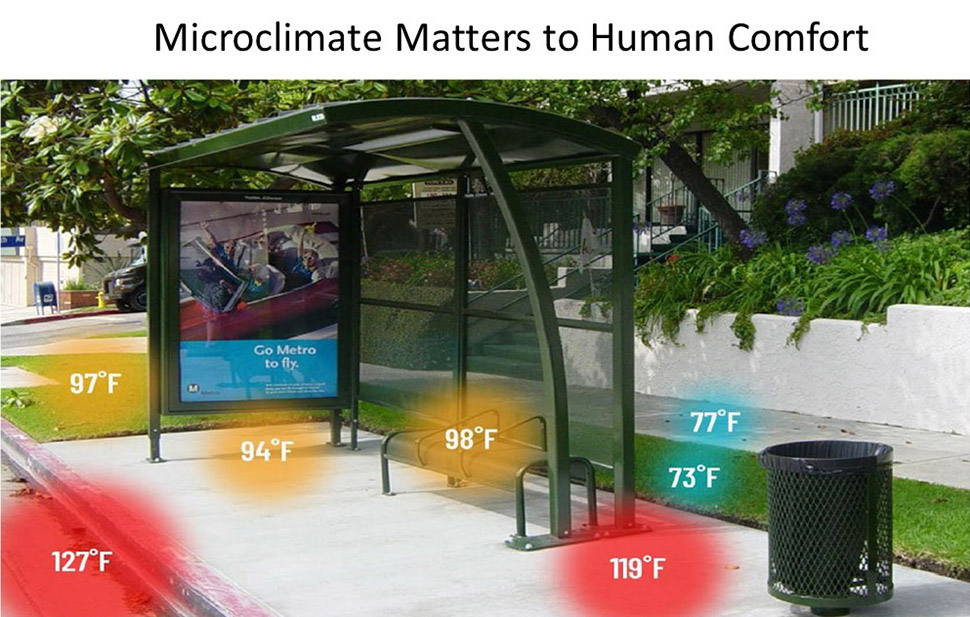
[Image: Hyphae Design Labs]
Project partners include the city of Dallas, Dallas County, the North Central Texas Council of Governments, and the district’s three major hospitals.
The foundation said the project has 65 national experts from 50 different organizations who all give their time to support the creation of a thriving medical district for the 21st Century.
A green place to heal, work, live, and play
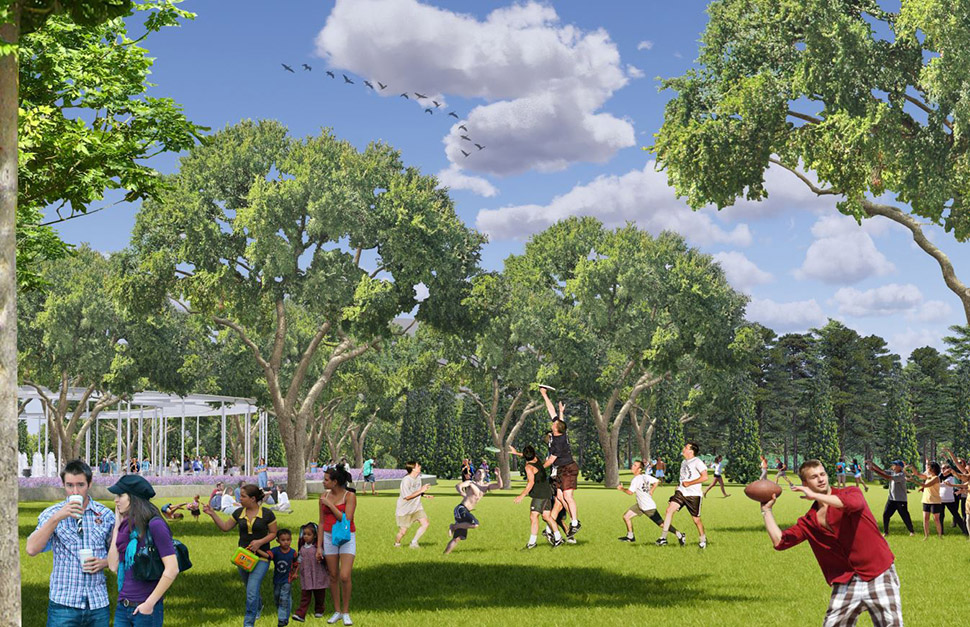
Rendering of the Southwestern Medical District green space project. [Image: Texas Trees Foundation]
“We’re thrilled to join the Southwestern Medical District team and look forward to working closely with Texas Trees Foundation and their partners to develop an innovative, responsive, and evidence-based design for the district’s Green Spine and Green Park,” the project’s landscape architectural team from James Corner Field Operations said in a statement. “We’re inspired by TTF’s ambition to rethink the role of infrastructure in our cities, and aim to create a connected, healthy, and safe place—a verdant urban refuge for respite, rejuvenation, and healing.”
The foundation said that trees will cool the surfaces of the surrounding environment by providing shade and will offer additional health benefits to the district.
The foundation added that the project will transform Harry Hines within the medical district into a “living laboratory” to demonstrate the interdependence of human health and nature—balancing the grey of concrete on the sidewalks and roadways with the green to ensure the area is a desirable place to heal, work, live, and play.
More looks at the green space
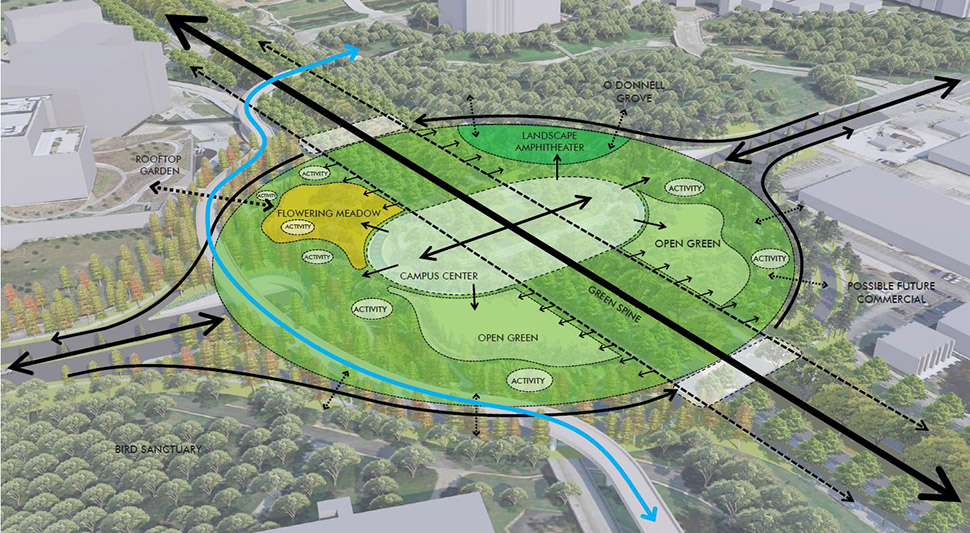
[Texas Trees Foundation]

Rendering of the Southwestern Medical District green space project. [Image: Texas Trees Foundation]
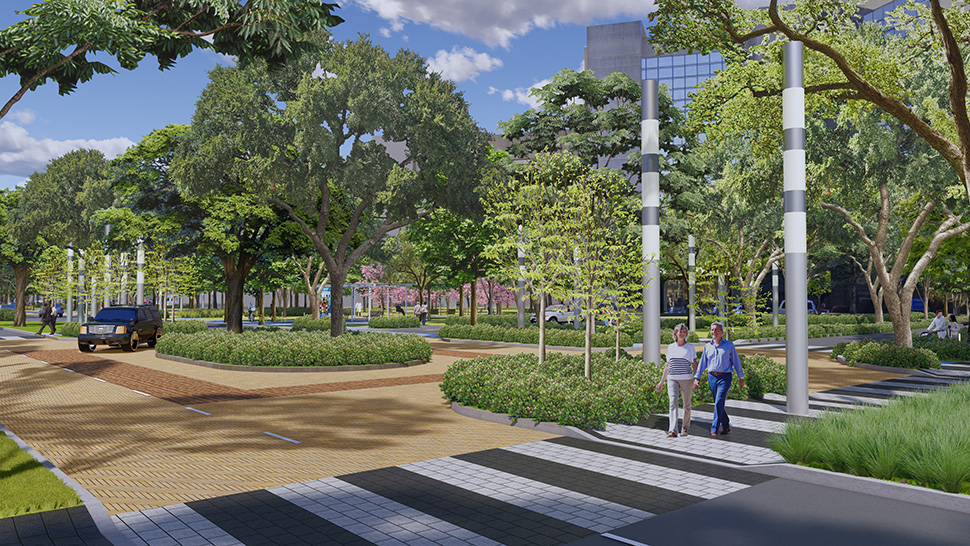
Rendering of the Southwestern Medical District green space project. [Image: Texas Trees Foundation]
![]()
Get on the list.
Dallas Innovates, every day.
Sign up to keep your eye on what’s new and next in Dallas-Fort Worth, every day.

